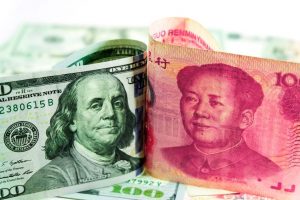
You have probably heard about the rising tariffs and the escalating trade war between China and the U.S. It has caused a level of uncertainty as to where and how it will end. What is certain is that neither country is benefiting from the intensifying conflict. It has been said that the tariffs are meant to level the trade deficit and thus improve our economy, but China’s ability to supply less expensive products has allowed consumers to buy more products from U.S. companies and help provide millions of Americans retail and transportation jobs. Raising tariffs hurts the consumer more than anyone else.
The current administration is taking a bold risk with the situation. China has options to retaliate outside of tariffs. They could stop buying U.S. Treasury Bonds, which will make it much more difficult for the U.S. to borrow. They could devalue the Yuan, which in turn would counter the tariffs. This article expands on measures China could take.
Kristina Hooper, Invesco’s chief global market strategist, has this to say: “In fact, when it comes to non-tariff measures, it can do much more to hurt America than vice-versa. China has a much larger arsenal of weapons than the U.S. Tariffs are just the tip of the iceberg in terms of what China has.”
China has been diversifying, and increasing their exports to other countries in response to the tariffs. They have been making a major push in Africa, massively increasing their exports in the region as reported by gbtimes here.
Even with the ebb and flow of the trade war, America will still continue to buy from China. Why? Because China is still the most cost efficient option. As products can be 300% more expensive to manufacture in the U.S., a 10% tariff won’t stop companies from importing their products from China. Many companies rely on China to give them a competitive edge. There aren’t many other viable options to pick from. There may be a few alternatives for textiles; some companies can go to Vietnam, Malaysia, or Cambodia to get products made, although it may not necessarily be cheaper. China will remain the main source of overseas manufacturing.
Visit our request a quote page to see how much you could save on manufacturing.
Photo Credit: Dilok Klaisataporn
